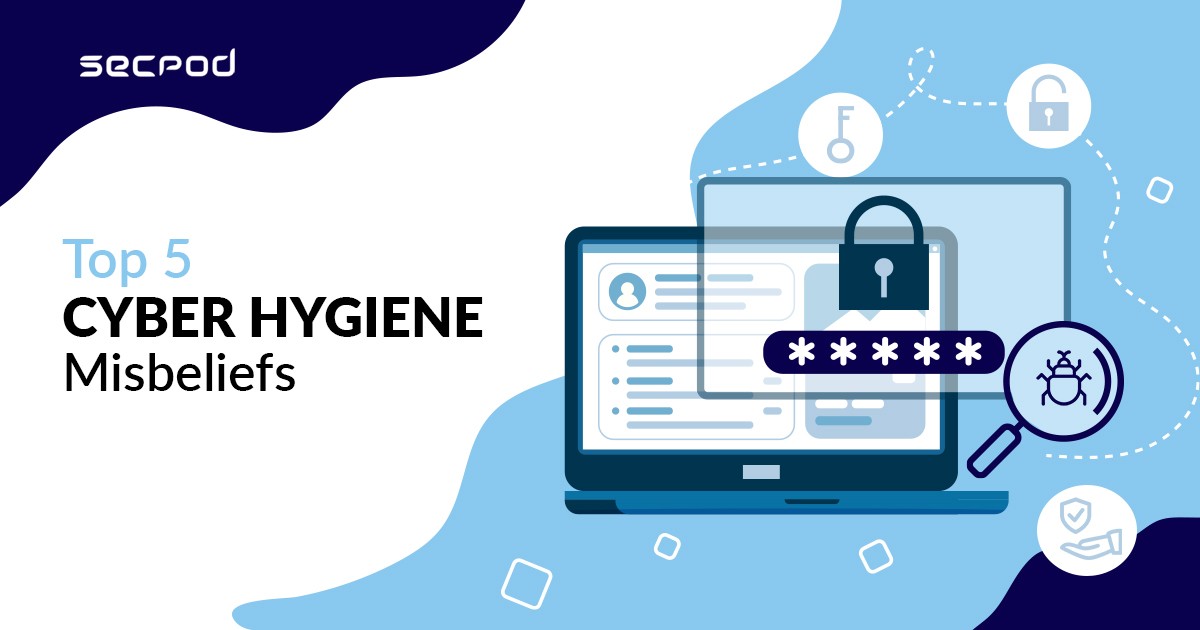COVID19 has taught the world the powerful lessons on personal hygiene. Given that work from home culture is turning out to be the new norm and big organizations are already passing regulations on continuing it for the next few years, cyber hygiene is an important topic the world should be prepared to handle now. Whether the endpoints are going to be within or outside the network, securing them from cyber threats is an important task. This can be achieved by using a vulnerability management solution.
Following a healthy cyber hygiene routine is essential to maintain the security posture of an organization. Although many organizations are aware of how cyber hygiene is crucial to safeguard their network, there are still some misbeliefs revolving around this topic. These myths and misconceptions serve as a shortcoming for IT administrators, hindering them from achieving healthy cyber hygiene practices. Healthy cyber hygiene practice can be achieved by patching vulnerabilities using a patch management solution. Let us have a quick look at the top 5 Cyber Security Myths and eliminate these weak spots.
The 5 Cyber Security Myths:
1) “Endpoints are well protected using strong antivirus software.”
Antivirus is needed for securing the endpoints. However, it may not be enough to secure the endpoints completely. Enterprises often assume that they are safe from cyber-attacks if they have robust antivirus software in place. But the fact is attackers already know multiple ways through which they can enter the network. Anything available in endpoints today is vulnerable, and antivirus software alone cannot act as a shield to secure the system.
2) “Vulnerability scanning alone is enough to manage software vulnerabilities.”
Deploying an efficient vulnerability scanner in the network is the latest trend, followed by the enterprises today. By using this scanner, organizations quickly detect the vulnerabilities available in their network endpoints. This data satisfies the organizations as they have successfully identified the software loopholes in the network. However, proper security cannot be achieved only with identification. Further assessment and remediation of these vulnerabilities are necessary to evict the security blind spots.
3) “Patch only Windows and Microsoft applications to prevent attacks.”
Patching is one other essential practice organizations follow to secure their endpoints. In general, enterprises believe that cyber attackers target only Windows and Microsoft applications. This makes organizations assume that it is sufficient to monitor and patch these applications alone, and they often neglect to patch third-party applications. But in the past, we can see that attackers have exploited major third-party apps like Adobe, Java, Firefox, etc. Any software can be an entry point for a cyber-attack, whether it is Windows, Microsoft, or third-party application. Thus, enterprises should have a complete patching methodology in place.
4) “Annual compliance audits provide adequate security to the network.”
Abiding by a security compliance benchmark is an essential step in achieving cyber hygiene. Organizations do believe in this. However, preparing the endpoints a few days before the annual compliance audit does not make the parameters wholly secured. Enterprises feel that this yearly practice will provide adequate security to the network. But these security benchmarks come with regular upgrades and changes, and the endpoints must always abide by these protocols.
5) “Cyber hygiene is complex and costly.”
The term cyber hygiene looks complicated to many organizations. They feel that to implement cyber hygiene, they must purchase many security solutions and deploy them in their network. Enterprises often assume that it is not a cost-effective approach, and the time and efforts consumed in managing these solutions get daunting. This is a significant factor that hinders organizations from orchestrating healthy cyber hygiene routines. However, this is not always true.
These are the top 5 Cyber Security Myths
It is time organizations eliminate all the cyber hygiene blind spots and attack-proof their network from emerging cyber threats using SecPod SanerNow.
Get a Free Trial of SecPod SanerNow and Cyber Hygienize your endpoints now!

